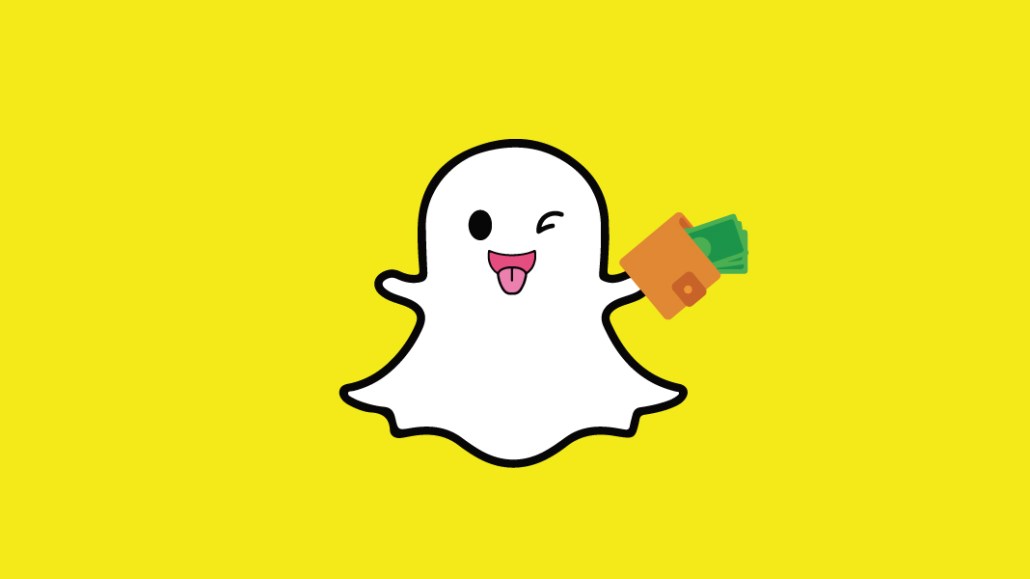Snapchat’s creator charm offensive stops short of ad revenue sharing

Snapchat wants better relationships with creators on its platform, but it is so far resisting the short-term step of cutting creators in on ad revenue.
Snap in June at VidCon teased that it was experimenting with sharing ad revenue with creators, but that program has been limited to a select few individuals who have signed exclusive content deals with the platform. That includes Snapchat Shows like FuckJerry or Publisher Stories like Daquan. Yet for creators who aren’t contracted, Snapchat remains open to them participating in branded content deals but unwilling to introduce more ad revenue share.
For now, Snapchat has opted to treat a select group of creators more as publishing partners rather than ad inventory, something that transpired after nearly five years of Snapchat being reluctant to embrace its creator community. Only a select few — like YouTuber Patrick Starrr with his new Snapchat Show, announced at VidCon — can get a share of Snap’s ad revenue and both Snapchat and the creators are invested in the series’ overall success. Meanwhile, YouTube is often criticized by its community for not being committed to an individual’s success. Creators find themselves forced to change their styles, such as the length of a video, to win the favor of the YouTube algorithm.
Snap has side-stepped that constant backlash by slowly adding features that aren’t reliant on pre-roll or mid-roll ads.
“For me, as a creator who has monetized my channel for the past four years with little involvement from Snapchat themselves, I think the steps Snap is taking are great and an added bonus. My continued creativity on Snapchat isn’t dependent on it,” said Cyrene Quiamco, a creator who has invested the majority of her time in producing on Snapchat.
Snap’s team has been invested in building other money-making opportunities. For example, Snapchat has introduced native commerce, where celebrities like Kylie Jenner has sold her beauty products and Nicki Minaj has used shoppable AR. Snapchat isn’t yet taking a cut of that revenue.
Now, Snapchat is extending the in-app commerce feature to more of its community. Quiamco said on Aug. 21 she was working with Snap’s team to set up her own store, where she plans to sell her book.
Ad position: web_incontent_pos1
Snap CEO Evan Spiegel admitted to the “neglect” of its creator community during the company’s third-quarter earnings call in 2017. Over this past year, creators have become one of the company’s core initiatives, and that has materialized several big launches this summer. In May, Snap hosted its first-ever Creators Summit, where executives met with 13 Snapchat users to discuss how they could better work together. Some programs came directly out of that two-day event, including Snapchat Storytellers, where the app pairs creators with advertisers.
“Snapchat, I feel, has really stepped up in creating a real relationship with its creators this year. From the summit that flew 13 creators worldwide, promoting our branded stickers, giving us ad credits to boost our stories, direct support and an open door for ideas and suggestions, and the latest is the Storytellers program,” said Quiamco, who is one of the five Snapchat creators involved in the launch of Storytellers.
Quiamco said the Storytellers program has allowed her to feel comfortable with committing the majority of her time to create on Snapchat. No deals have been signed yet, she said, but brands contacted her over the last month for some opportunities.
YouTube has been writing checks to its top creators to serve as ambassadors for its new features, Bloomberg reported last week. That’s in addition to YouTube’s core business of sharing ad revenue with its creators after they reach a certain level of subscribers to their channels, as long as they abide by the platform’s community standards.
While Snapchat may be fighting for user attention from YouTube, it has yet to introduce more transactional deal-making that arguably could inspire more loyalty from so-called influencers. That resistance comes despite past calls from popular creators like Hank Green.
Ad position: web_incontent_pos2
Snapchat's inability to inspire creator loyalty reminds me that PLATFORMS SHOULD SHARE REVENUE.
— Hank Green (@hankgreen) July 15, 2017
But Snap’s resistance comes with benefits. The absence of a self-serve revenue sharing program allows Snapchat to avoid some scrutiny. YouTube creators, who are eligible for ad revenue share, are constantly calling out the platform for transparency issues. Philip DeFranco, popular for his news commentary on YouTube, is currently testing whether or not his videos about sensitive topics are being suppressed, for example. Meanwhile, the success of a creator on Snapchat is less at the whim of an algorithm.
More in Marketing

In the marketing world, anime is following in the footsteps of gaming
As marketers look to take advantage of anime’s entry into the zeitgeist, they might be wise to observe the parallels between the evolution of anime as a marketing channel and the ways brands have learned to better leverage gaming in recent years.

With the introduction of video ads and e-commerce, Roblox looks to attain platform status
Roblox is expanding into more areas than just ads in 2024. Much like platforms such as Amazon and Facebook have transcended their origins to evolve from their origins as online marketplaces and social media channels, Roblox is in the midst of a transformation into a platform for all elements of users’ virtual lives.

PepsiCo wants to remain a ‘driver of culture’ as it turns to influencers and activations amid rebrand
The soda-maker says it can translate cultural relevance into sales volume.
Ad position: web_bfu


